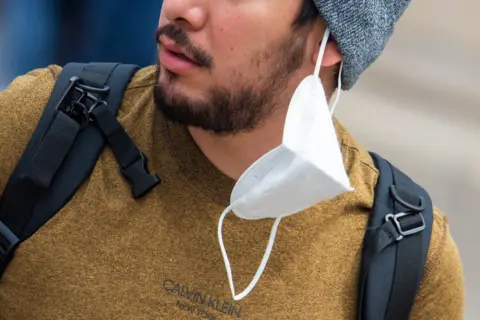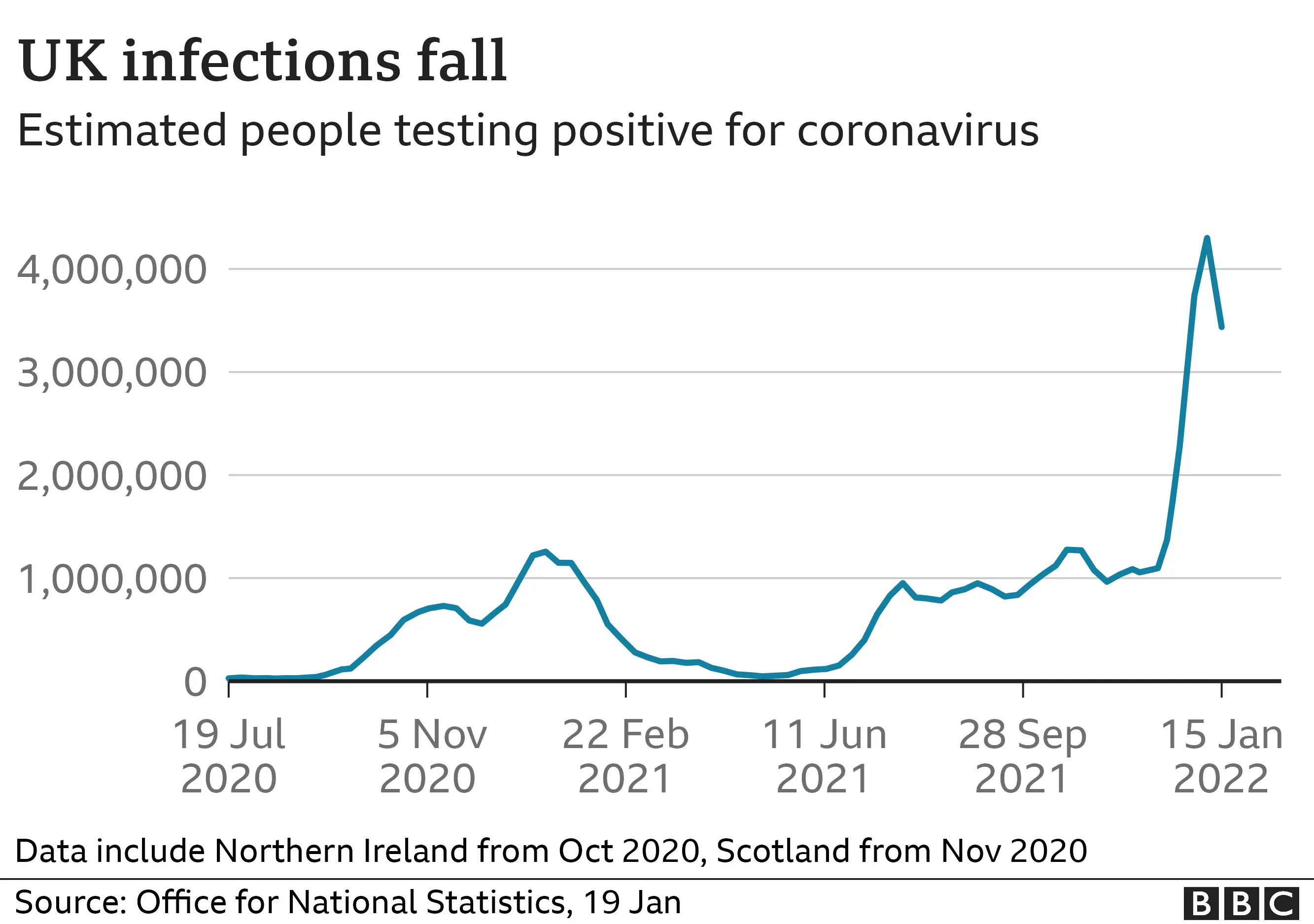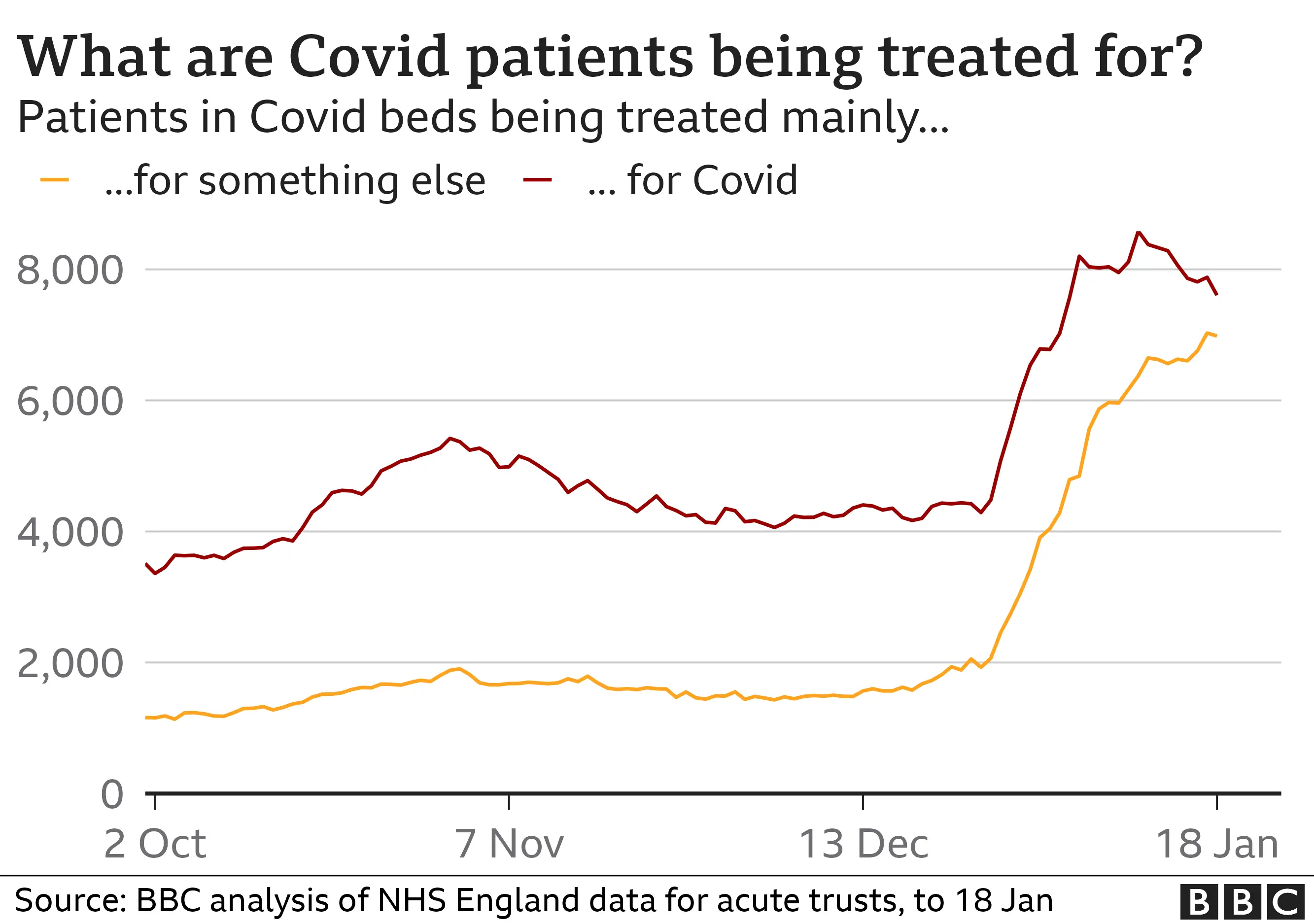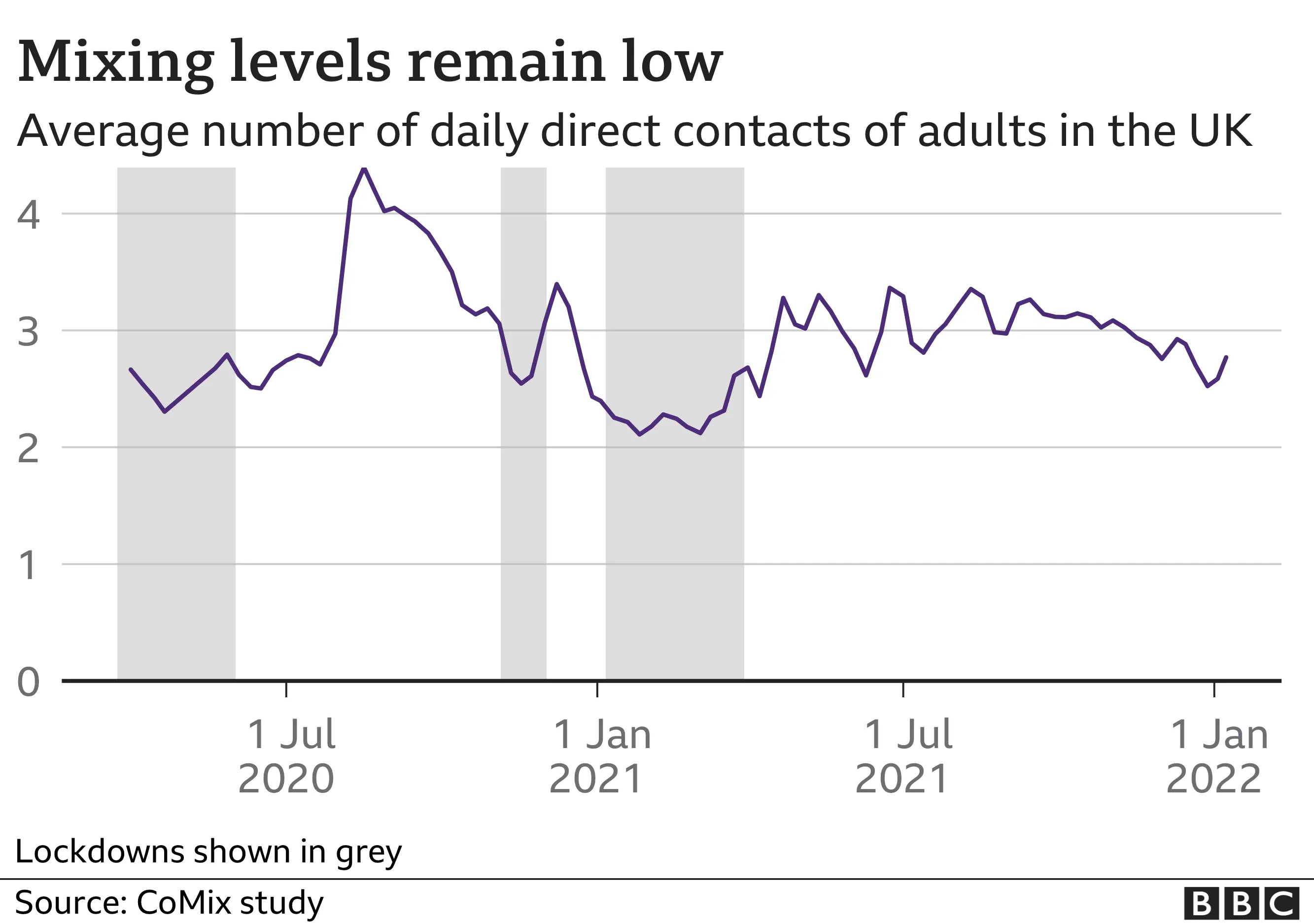Omicron: Is it too soon to lift the restrictions?

 PA Media
PA MediaThe restrictions introduced to curb the Omicron wave are being scrapped in England.
Mandatory face coverings, Covid passes and working-from-home guidance - the so-called Plan B - are all going.
It leaves England - in the words of Health Secretary Sajid Javid - the most open country in Europe. But is it too soon to take such a step?
Infections levels, while falling, are still well above what they were at the height of the peak last winter.


What is more, the progress being made varies between regions. The Midlands, North East and Yorkshire are yet to see hospital admissions start falling, despite a drop in the overall national figure.
It is why some scientists and public health experts have expressed concern the easing may be too much and risks a rebound in infections .
And one has to wonder what influence the political considerations have had - the Tory backbenchers were unlikely to vote to keep any part of Plan B.
But, in the end, it also comes down to a judgement about what is proportionate.
A trade-off has to be made between the costs of such restrictions and the benefits they bring.
And with the worst of the Omicron wave almost certainly over, the benefits were reducing.
Do you think it is too soon to lift restrictions? Share your experience by emailing [email protected]
Virus less severe
England - and the rest of the UK, for that matter - is one of best protected nations when you combine the immunity built up by vaccination and previous infection.
More than 97% of the population has antibodies, the latest Office for National Statistics data suggests. When the pandemic began, that was, of course, 0%.
This does not necessarily mean people are immune to infection, but our bodies have become better at fighting the virus. The result is Covid is now causing milder illness and the proportion of infected people dying has dropped markedly.
Although there are also signs this is partly down to Omicron being intrinsically less severe too.


This has helped keep the number of deaths in recent weeks much lower than previous waves and at a similar level to a bad flu season.
It is very much the best-case scenario in terms of what we were told we could see when this variant, first identified in South Africa, took off.
Hospital admissions appear to have peaked at just over 2,000 a day, when modelling suggested they could reach three to four times that in the worst case and even the Scientific Advisory Group for Emergencies (Sage), the government's official advisory body, said it expected them to hit 3,000 at least.
But there are still huge pressures on the NHS. More than 15,000 people in England are in hospital with Covid, although this is not entirely what it seems as close to half of them have been admitted for something else rather than being seriously ill with the virus.


So there are plenty of reasons for ministers and their advisers to say the data supports the case for a relaxation.
The restriction that reduces spread of the virus most when infected - the requirement to isolate - remains, remember.
The outgoing Plan B measures, by comparison, all have a more marginal impact, if any.
Of these, working from home was the measure government scientists always argued had the most effect - but the jury was out over the exact effectiveness of the others.
For example, the Department for Education's own evidence review admitted the data on the ability of masks in classrooms to reduce the spread of the virus was inconclusive, with studies showing mixed results. What is more, their use could harm communication and learning.
More freedom
Meanwhile, the rise of Omicron meant the effectiveness of two vaccine doses in preventing infection has been significantly reduced, weakening the argument for Covid passes to access events.
Instead, what many experts believe will be crucial now is the behaviour of the public.
Just because the government is giving people more freedom, it does not mean there will be a headlong rush back to normal.


This has been seen throughout the pandemic. Even after England's 19 July "Freedom Day", mixing patterns did not rebound back to pre-pandemic levels, when people would average 10 contacts a day, helping keep the virus largely in check until the arrival of Omicron.
By the end of December, as the Omicron wave was peaking, daily contacts were actually close to the levels seen in the first lockdown, curbing the spread in the process.
Now the public is again being asked to manage the risks, and that behaviour will determine the course of the pandemic over the coming weeks.
Follow Nick on Twitter.
Read more from Nick.
